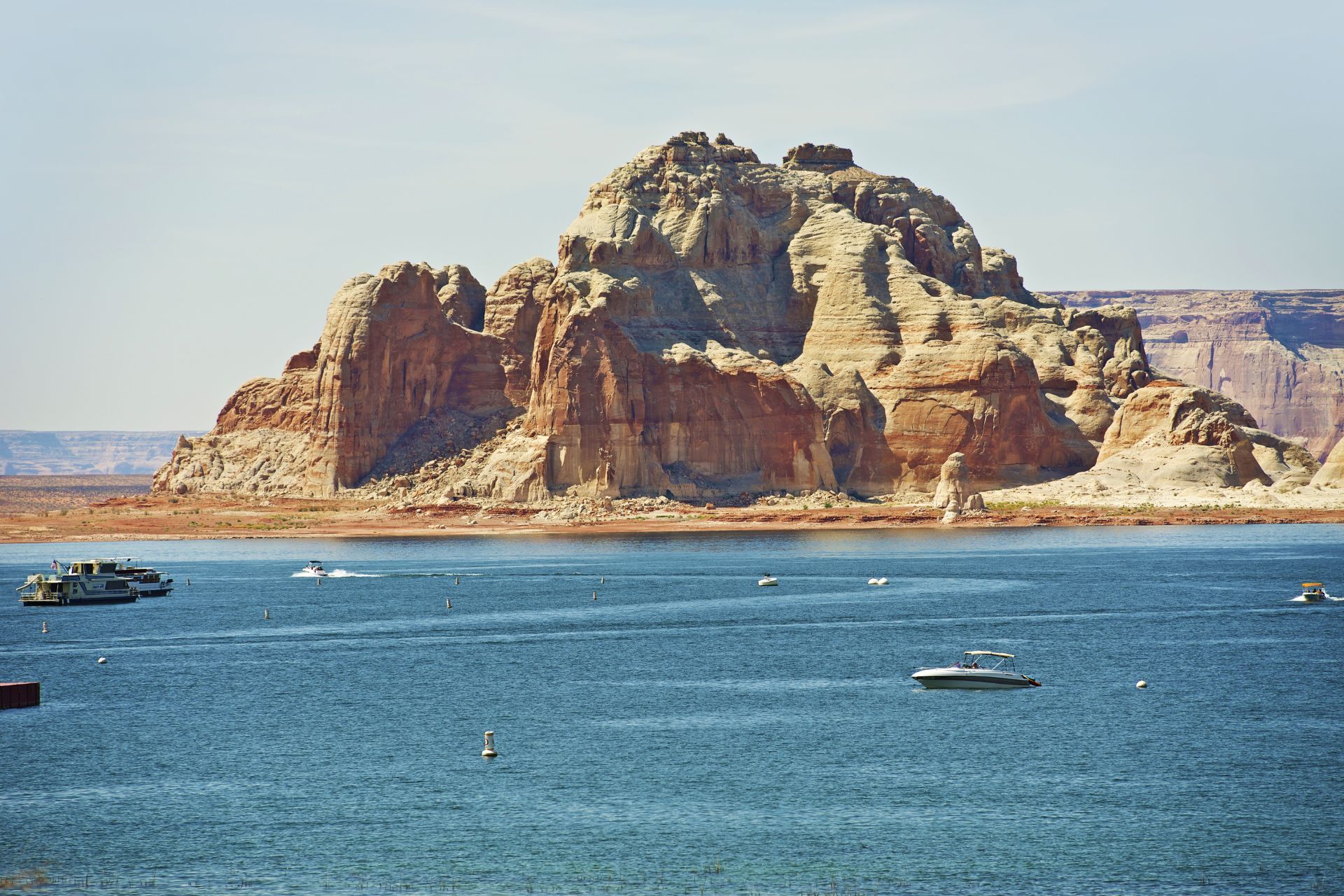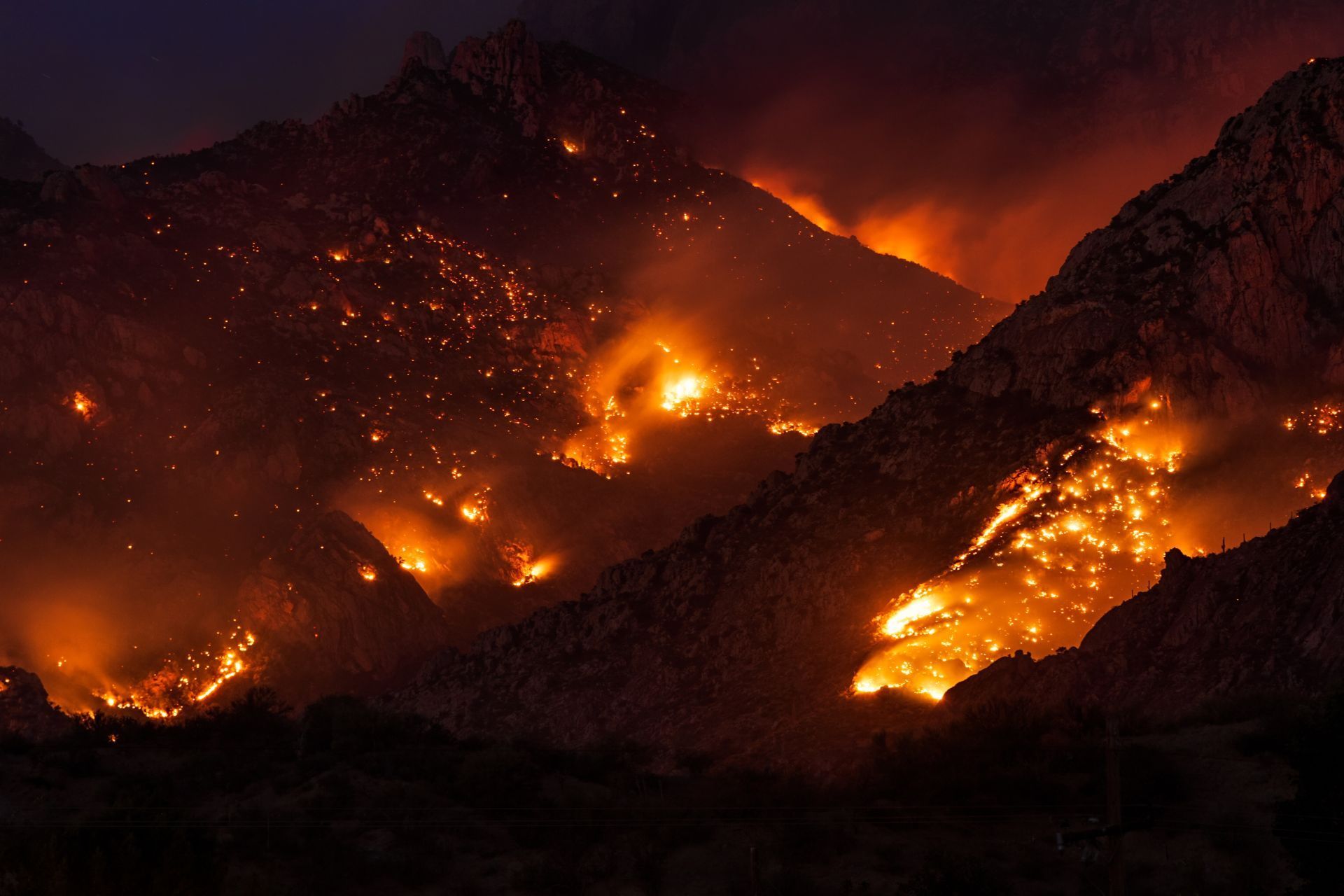Colorado is known for its stunning landscapes, outdoor activities, and vibrant communities. However, its diverse geography also makes it susceptible to a variety of natural disasters. Understanding these risks and preparing for them is crucial for residents. This article explores the top natural disasters to insure against in Colorado and offers practical tips on how to prepare for each.
1. Wildfires
Wildfires are a significant threat in Colorado, particularly during the dry summer months. The combination of high temperatures, low humidity, and strong winds can create ideal conditions for fires to ignite and spread rapidly.
Understanding Wildfire Risks
Areas with dense vegetation, such as forests and grasslands, are particularly vulnerable. The risk is heightened in regions experiencing drought conditions. Homeowners in these areas should be aware of their surroundings and take proactive measures to mitigate risks. In addition to natural factors, human activities such as campfires, discarded cigarettes, and even sparks from machinery can ignite wildfires. It’s essential for residents to stay informed about local fire bans and regulations, especially during peak fire season, to help prevent accidental ignitions.
Insurance Considerations
When it comes to insuring against wildfires, homeowners should ensure their policies cover fire damage. It’s important to review the specifics of coverage, including any exclusions or limitations related to wildfires. Some insurers may offer additional coverage options specifically for wildfire damage. Furthermore, homeowners should consider the value of their property and possessions, as rebuilding costs can vary significantly depending on the extent of damage and current market conditions. Keeping an updated inventory of personal belongings can aid in the claims process and ensure adequate coverage is in place.
Preparation Tips
To prepare for potential wildfires, homeowners should create defensible space around their properties. This includes clearing flammable materials, maintaining a well-watered lawn, and using fire-resistant building materials. Additionally, having an evacuation plan and an emergency kit ready can make a significant difference in case of a wildfire. It’s also beneficial to establish a communication plan with family members and neighbors, ensuring everyone knows the evacuation routes and designated meeting spots. Regularly practicing fire drills can help ensure that all household members are familiar with the procedures, reducing panic and confusion during an actual emergency. Moreover, staying informed through local fire management agencies can provide valuable updates on fire risks and safety measures specific to the community.
2. Flooding
Flooding is another common natural disaster in Colorado, often resulting from heavy rainfall, rapid snowmelt, or dam failures. Areas near rivers and streams are particularly at risk, especially during the spring thaw. The state has a varied topography, which can exacerbate flooding conditions, as water flows quickly down mountainsides and into valleys, leading to sudden and severe inundation in certain regions.
Types of Flooding
There are several types of flooding to be aware of, including flash floods, river floods, and urban flooding. Flash floods can occur with little warning and can be extremely dangerous. They often happen within six hours of heavy rainfall and can transform dry creek beds into raging torrents almost overnight. River floods, on the other hand, develop more gradually as rivers overflow their banks due to prolonged rainfall or melting snow. Urban flooding is particularly problematic in cities where impervious surfaces prevent water absorption, leading to overwhelmed drainage systems and significant property damage. Understanding the specific flood risks in your area is essential for effective preparation.
Insurance Coverage for Flooding
Standard homeowners insurance policies typically do not cover flood damage. Therefore, residents in flood-prone areas should consider obtaining separate flood insurance through the National Flood Insurance Program (NFIP) or private insurers. This coverage can be vital for financial protection in the event of a flood. Additionally, it is important for homeowners to review the specific terms of their flood insurance policy, as coverage limits and exclusions can vary significantly. Some policies may also offer additional living expenses if a home becomes uninhabitable due to flooding, which can provide crucial support during recovery.
How to Prepare for Flooding
Preparation for flooding includes creating an emergency plan that outlines evacuation routes and communication strategies. Homeowners should also consider elevating appliances and utilities above potential flood levels, as well as installing sump pumps and flood vents to reduce damage. Furthermore, assembling an emergency kit with essential supplies, such as food, water, medications, and important documents, can be a lifesaver in the event of a sudden flood. Community preparedness is also key; participating in local emergency response drills and staying informed about weather alerts can help individuals and families respond more effectively when flooding occurs.
3. Severe Storms and Hail
Colorado is known for its unpredictable weather, which can lead to severe storms and hail. These storms can cause significant damage to homes, vehicles, and landscapes. The state's unique geography, with its mountains and plains, contributes to the rapid development of severe weather systems, making it essential for residents to stay informed and prepared.
The Impact of Hail
Hailstorms can occur during the spring and summer months and can range from small pellets to golf ball-sized chunks of ice. The damage caused by hail can be extensive, especially to roofs, windows, and vehicles. Understanding the likelihood of hail in your area can help in preparing and protecting property. In fact, some regions of Colorado are more prone to hailstorms than others, with the Front Range being particularly susceptible. Farmers and agricultural businesses often face devastating losses due to hail, as crops can be severely damaged or destroyed in a matter of minutes, impacting local economies and food supply chains.
Insurance for Storm Damage
Homeowners insurance typically covers damage from severe storms, including hail. However, it’s crucial to review the policy details to ensure adequate coverage. Some policies may have specific exclusions or limitations for hail damage, so understanding these nuances is important. Additionally, homeowners may want to consider supplemental coverage or endorsements that specifically address hail damage, especially if they live in high-risk areas. Engaging with an insurance agent who understands the local weather patterns can provide valuable insights into the best coverage options available.
Preparing for Severe Storms
To prepare for severe storms, homeowners should secure outdoor items that could become projectiles during high winds. Installing storm shutters or using impact-resistant windows can also provide additional protection against hail damage. Keeping an emergency kit stocked with essentials can be beneficial during storm outages. Furthermore, creating a family communication plan ensures that all members know what to do and where to go during severe weather events. Regularly checking weather forecasts and alerts, as well as having a reliable weather radio, can help families stay informed and take timely action when storms are approaching. Engaging with local community resources, such as storm preparedness workshops, can also enhance awareness and readiness for severe weather challenges.
4. Earthquakes
While Colorado is not as well-known for earthquakes as states like California, it is still at risk for seismic activity. The state has experienced several notable earthquakes, and the potential for future quakes exists. In fact, the most significant earthquake recorded in Colorado occurred in 1967 near the town of Rocky Mountain Arsenal, registering a magnitude of 5.3. This event serves as a reminder that even regions with a lower frequency of seismic activity can experience unexpected tremors.
Understanding Earthquake Risks
The risk of earthquakes varies across Colorado, with the highest likelihood in the western and southern regions. Understanding the geological makeup of your area can help gauge the potential for seismic events. The state is home to several fault lines, including the Front Range Fault System, which increases the likelihood of seismic activity. Additionally, the presence of ancient volcanic activity in certain areas can contribute to ground instability, making it essential for residents to stay informed about local geological surveys and risk assessments.
Insurance Considerations for Earthquakes
Most standard homeowners insurance policies do not cover earthquake damage. Homeowners in earthquake-prone areas should consider purchasing a separate earthquake insurance policy. This coverage can help protect against the financial impact of earthquake-related damage. It's also important to review the terms of any policy carefully, as coverage limits and deductibles can vary significantly. Some policies may offer additional living expenses if a home becomes uninhabitable due to quake damage, providing crucial support during recovery.
Preparing for Earthquakes
Preparation for earthquakes involves securing heavy furniture and appliances to walls, creating an emergency plan, and having an emergency kit ready. Knowing how to “Drop, Cover, and Hold On” during an earthquake can also be crucial for safety. Furthermore, communities can benefit from participating in local preparedness drills and educational programs, which often provide valuable information on how to respond effectively during an earthquake. Engaging with neighbors and forming a community response team can enhance overall preparedness, ensuring that everyone knows their roles and responsibilities in the event of a seismic event. Having a communication plan in place can also facilitate coordination and support during emergencies, making it easier to check on loved ones and share resources.
5. Landslides and Mudslides
In Colorado’s mountainous regions, landslides and mudslides can pose a significant risk, especially after heavy rainfall or rapid snowmelt. These events can be sudden and destructive, impacting homes and infrastructure. The steep terrain, combined with the unique geological makeup of the area, creates a perfect storm for these natural disasters. Residents often find themselves grappling with the aftermath, which can include not only physical damage but also emotional and financial stress.
Identifying Landslide Risks
Areas with steep slopes, loose soil, and heavy vegetation are particularly susceptible to landslides. Homeowners should be aware of the geological conditions in their vicinity and monitor any signs of instability, such as cracks in the ground or shifting soil. Additionally, understanding the local weather patterns can provide crucial insights; for instance, extended periods of rain can saturate the ground, increasing the likelihood of a landslide. Engaging with local geological surveys or consulting with experts can further enhance awareness and preparedness.
Insurance Coverage for Landslides
Not all homeowners insurance policies cover landslide damage. It is essential to check the specifics of your policy and consider additional coverage if you live in a high-risk area. Understanding the terms and conditions can help ensure adequate protection. Some policies may offer optional riders for landslide coverage, which can be a wise investment for those in vulnerable locations. It is also beneficial to document your property and its condition regularly, as this can aid in claims processing should disaster strike.
Preparing for Landslides
To prepare for potential landslides, homeowners should assess their property for vulnerabilities and consider landscaping solutions that stabilize soil. Creating an emergency plan and having a kit ready can also be beneficial in case of an evacuation. This plan should include communication strategies, safe routes for evacuation, and a designated meeting place for family members. Furthermore, installing drainage systems can help divert water away from critical areas, reducing the risk of soil saturation that can lead to landslides. Regular maintenance of these systems is crucial, especially before the rainy season, to ensure they function effectively when needed.
6. Tornadoes
Colorado is part of “Tornado Alley,” and while tornadoes are not as frequent as in some other states, they can still occur, particularly during the spring and early summer months. Tornadoes can cause extensive damage to homes and infrastructure. The unique geography of Colorado, with its mountains and plains, can create conditions that are conducive to tornado formation, especially when warm, moist air from the south collides with cooler, drier air from the Rockies.
Understanding Tornado Risks
Most tornadoes in Colorado are relatively weak, but some can reach significant intensity. Residents in areas prone to tornadoes should stay informed about weather conditions and be prepared for sudden changes. The state experiences a variety of tornado types, including landspouts, which are typically weaker but can still pose a threat, and supercell tornadoes, which are more powerful and can cause devastating destruction. Awareness of the Enhanced Fujita Scale, which rates tornadoes based on the damage they cause, can help residents gauge the potential severity of a storm.
Insurance for Tornado Damage
Homeowners insurance typically covers tornado damage, but it’s essential to review the policy for any specific exclusions. Understanding the coverage limits and deductibles can help homeowners prepare financially in the event of a tornado. Additionally, some policies may offer riders or endorsements that can enhance coverage for specific risks associated with tornadoes, such as debris removal or additional living expenses if a home becomes uninhabitable. Consulting with an insurance agent can provide clarity on the best options for comprehensive protection.
Preparing for Tornadoes
Preparation for tornadoes includes having a designated safe space in the home, such as a basement or interior room, and keeping an emergency kit stocked with essentials. Staying informed through weather alerts and having a plan for communication can also be crucial. It is advisable to conduct regular tornado drills with family members to ensure everyone knows where to go and what to do in the event of a tornado warning. Furthermore, investing in a NOAA weather radio can provide real-time updates and alerts, which can be invaluable in a rapidly changing weather situation. Community preparedness programs often offer resources and training on how to respond effectively during severe weather events, fostering a culture of safety and resilience among neighbors.
7. Winter Storms and Extreme Cold
Colorado winters can bring severe storms, heavy snowfall, and extreme cold temperatures. These conditions can lead to power outages, property damage, and dangerous travel situations.
The Impact of Winter Storms
Winter storms can cause significant disruptions, including road closures and hazardous conditions. Understanding the potential impact of winter weather is essential for effective preparation and response.
Insurance Coverage for Winter Damage
Homeowners insurance typically covers damage from winter storms, including roof collapses due to heavy snow. However, reviewing the policy for specific coverage details is important to ensure adequate protection against winter-related damages.
Preparing for Winter Storms
To prepare for winter storms, homeowners should winterize their homes by insulating pipes, sealing drafts, and ensuring heating systems are functioning properly. Keeping an emergency kit with supplies such as food, water, and blankets can also be beneficial during severe winter weather.
Conclusion
Natural disasters can strike without warning, making it essential for Colorado residents to be prepared. Understanding the risks associated with wildfires, flooding, severe storms, earthquakes, landslides, tornadoes, and winter storms is crucial for effective planning and insurance coverage.
By taking proactive steps to mitigate risks and prepare for potential disasters, homeowners can protect their properties and ensure the safety of their families. Regularly reviewing insurance policies and staying informed about local hazards can also help residents navigate the challenges posed by natural disasters in Colorado.
In the face of nature's unpredictability, preparation is key. By being informed and ready, residents can face the challenges of natural disasters with confidence and resilience.
Share now!











